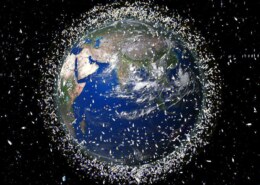As we can observe in today’s world, agriculture is possible even in desserts. How can we justify this statement?
Preventing Cosmic Waste 1. Measures to Prevent Cosmic Waste: Debris Tracking: Use satellites to monitor and track space debris to avoid collisions. Debris Removal: Develop technologies like robotic arms or nets to capture and remove debris from orbit. Design Improvements: Create spacecraft with featRead more
Preventing Cosmic Waste
1. Measures to Prevent Cosmic Waste:
- Debris Tracking: Use satellites to monitor and track space debris to avoid collisions.
- Debris Removal: Develop technologies like robotic arms or nets to capture and remove debris from orbit.
- Design Improvements: Create spacecraft with features that reduce debris, such as components that burn up upon re-entry.
2. Pros and Cons:
- Pros:
- Improved Space Safety: Reduces the risk of collisions with operational satellites and spacecraft.
- Sustainable Space Operations: Helps maintain a clean environment for future space missions.
- Cons:
- High Costs: Technologies for debris removal and tracking can be expensive.
- Technical Challenges: Developing effective and reliable debris removal methods is complex.
3. Impact of Drastic Expansion:
- Potential Problems:
- Collision Risk: Increased debris could lead to more frequent collisions, creating even more debris.
- Operational Disruptions: Higher debris density could interfere with satellite operations and space missions.
- Planetary Effects:
- No Direct Impact: Cosmic waste in orbit around Earth does not affect planetary orbits or revolutionary paths.
Preventing cosmic waste is crucial for ensuring the long-term usability and safety of space environments.
See less

AGRICULTURE IN DESERTS Agriculture in deserts involves overcoming extreme conditions such as high temperature, poor soil quality etc...and utilizing advanced methods and techniques to cultivate crops. Countries like Israel and United Arab Emirates (UAE) are main examRead more
AGRICULTURE IN DESERTS
Agriculture in deserts involves overcoming extreme conditions such as high temperature, poor soil quality etc…and utilizing advanced methods and techniques to cultivate crops. Countries like Israel and United Arab Emirates (UAE) are main examples of successful agriculture projects. The high risk of cultivation is avoided by some methods such as drip irrigation, desalination, hydroponics, aeroponics, drought resistant crops, soil management, water harvesting, agroforestry and vertical farming.
DRIP IRRIGRATION:
By this method, water flows directly into the plant’s root and minimizes the water evaporation.
DROUGHT-RESISTANT CROPS:
Genetically modified crops are more resistant to drought that helps in cultivation with minimal amount of water.
AGROFORESTRY:
It combines the cultivation of crops and the management of trees and shrubs in same land. Soil improvement, water conservation, carbon sequestration are the benefits of agroforestry.
METHODS USED IN DIFFERENT COUNTRIES:
ISRAEL:
Israel is known for its agricultural techniques. Drip irrigation plays vital role in cultivating crops. Infact, this method is invented in Israel. They are using desalination and hydroponics widely.
UAE:
They invested heavily in transforming its arid area into agricultural area. They use vertical farming and hydroponics.
MOROCCO AND SAHEL REGION:
Farmers cultivate olive and argan trees with cereal crops and vegetables. Those long trees provide shade to those crops. Those fruits are providing extra economic benefits in Morocco.
Agroforestry restores degraded lands and improves soil quality and increases crop yields.
Countries like Israel, UAE successfully implemented many methods for enhancing food security and environmental resilience.
See less